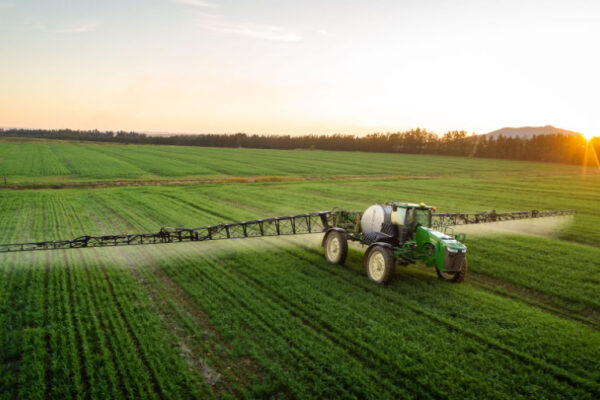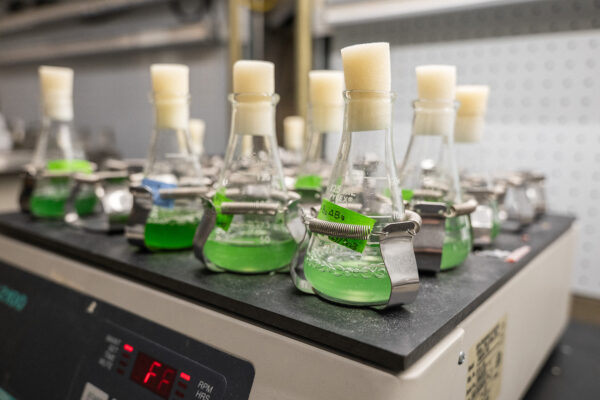A decision this month by the U.S. District Court of Arizona overturned the Environmental Protection Agency’s 2020 reapproval of three dicamba-containing products produced by agricultural companies Bayer, Syngenta and BASF.
The main point of contention in dicamba use is that it can drift into the air, to neighboring farms, where it can potentially damage crops not engineered to tolerate the weed-killing chemical.
While regulatory implications are still being sorted, environmental engineers at the McKelvey School of Engineering at Washington University in St. Louis have been studying the issue as to why the herbicide drift continues to vex farmers.
Kimberly Parker, an assistant professor of energy, environmental and chemical engineering, studies dicamba in the lab under different variables to determine the mechanisms behind how it turns into vapor, a process called volatilization.
Her lab has found that the dried residue of dicamba — rather than its liquid form, which is applied to plants like soybean and cotton — could be the source of the drift trouble.

Herbicides are typically made in a concentrated solution that is mixed with water. The water mixture changes the chemical nature of dicamba, which, by itself is a semi-volatile compound, meaning it can turn airborne. When mixed with other chemicals in water, dicamba becomes charged and is no longer volatile. But the water solution dries quickly after application, and that’s where things go awry.
“We think a lot of the volatilization may be happening after these droplets have dried out to a film or residue,” Parker said. Much of her lab’s work is investigating how the chemistry of dicamba changes when it’s in residue form.
Dicamba or bust?
This isn’t the first time dicamba has faced legal challenges, but as weeds have grown increasingly resistant to the herbicide glyphosate, farmers have increasingly turned to alternatives such as dicamba.
After the herbicide was reintroduced in 2015 with dicamba-resistant crops, it became popular fast. By 2017, one-third of all soybeans and half of cotton crops in the U.S. expressed dicamba tolerance, Parker said.
“The use of dicamba on these crops grew very quickly in a very short period of time,” she said.
It also went from typically being applied during the cold seasons to over-the-top (OTT) uses later in the year. This too could aggravate the off-target effects of the herbicide, if it happens to be applied during the time when temperatures are warmer and other vegetation is out, Parker noted.
“We’re still understanding the potential implications for the surrounding native vegetation as well,” Parker said.
Parker said it’s important to recognize that there are multiple environmental issues at play when evaluating herbicides. With the court’s decision, the OTT use of dicamba is on hold, but it’s not something farmers can afford to dismiss. Research such as Parker’s can help to reduce the negative environmental impacts of herbicides so dicamba is not such a double-edged sword.
“The emergence of herbicide-resistant weeds is a major environmental threat in and of itself,” Parker said. “The ability of farmers to use multiple herbicides to try to reduce the emergence of herbicide-resistant weeds is also an important goal to keep in mind.”



